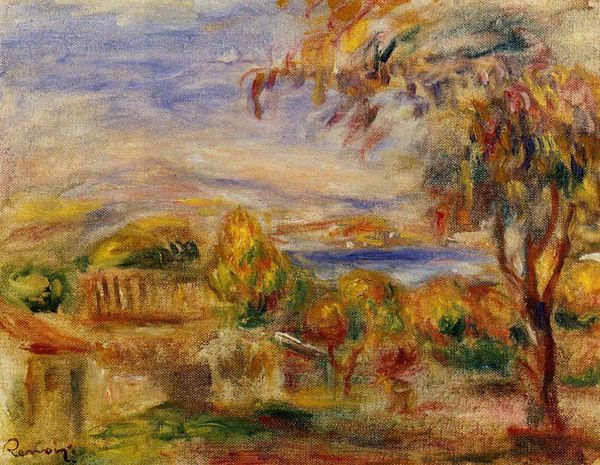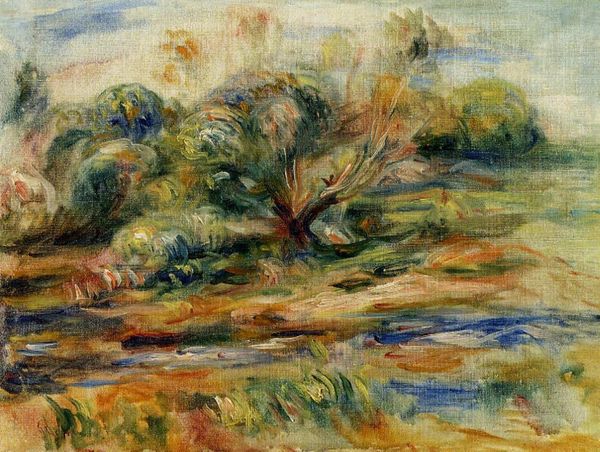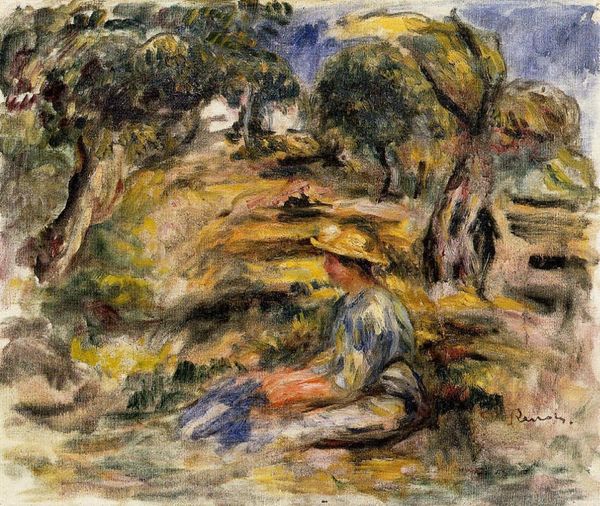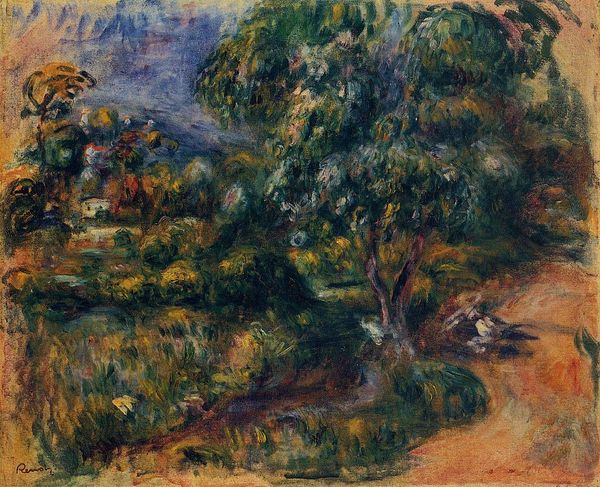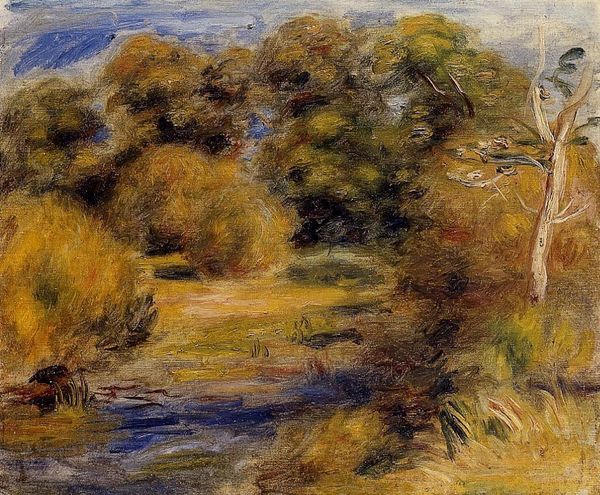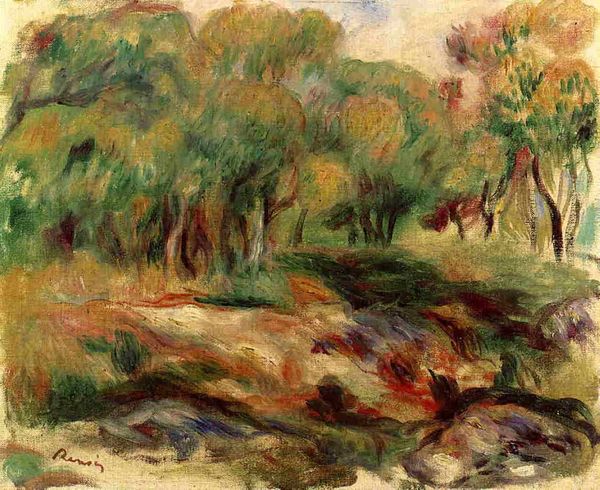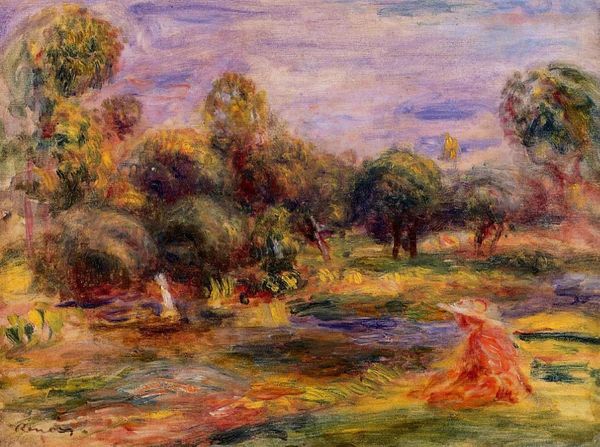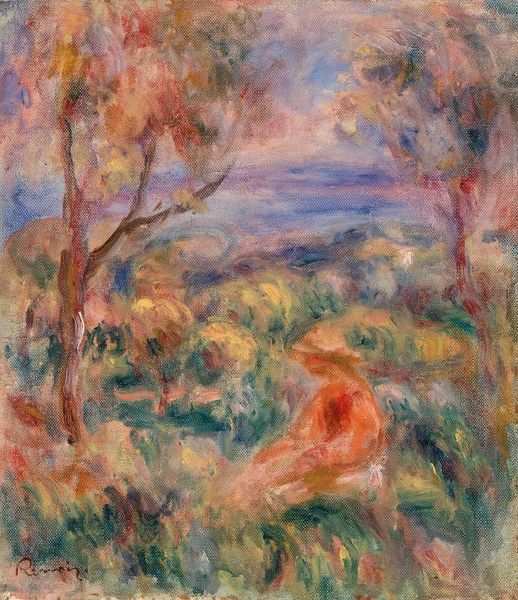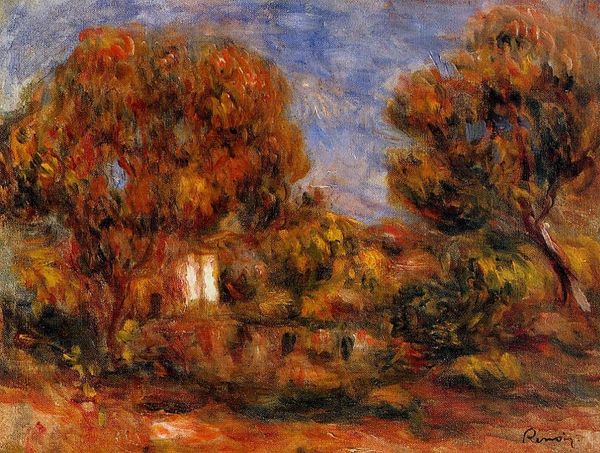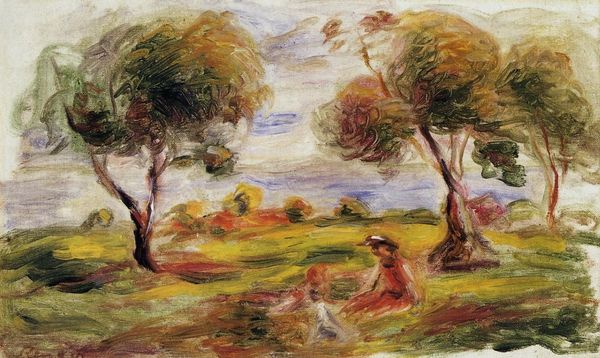
Copyright: Public domain
Pierre-Auguste Renoir made this landscape near Cagnes, likely en plein air, with oil paint on canvas. The visible brushstrokes and textured surface reveal Renoir's process. He wasn't aiming for a perfect representation, but rather an impression of the scene. Look closely, and you can almost feel the energy of his hand moving across the canvas. In the late 19th century, the rise of industrial manufacturing allowed for paint to be produced cheaply and on an industrial scale. This availability freed artists from the time-consuming labor of grinding their own pigments, encouraging experimentation and new approaches to painting like Impressionism. The looser style seen here marks a departure from the tightly rendered academic paintings of the past. It's a move towards a more immediate, personal expression, reflective of broader shifts in society and artistic values. So, next time you look at an Impressionist painting, consider the role of materials and making. They are not just aesthetic choices, but also a reflection of a changing world.
Comments
No comments
Be the first to comment and join the conversation on the ultimate creative platform.
